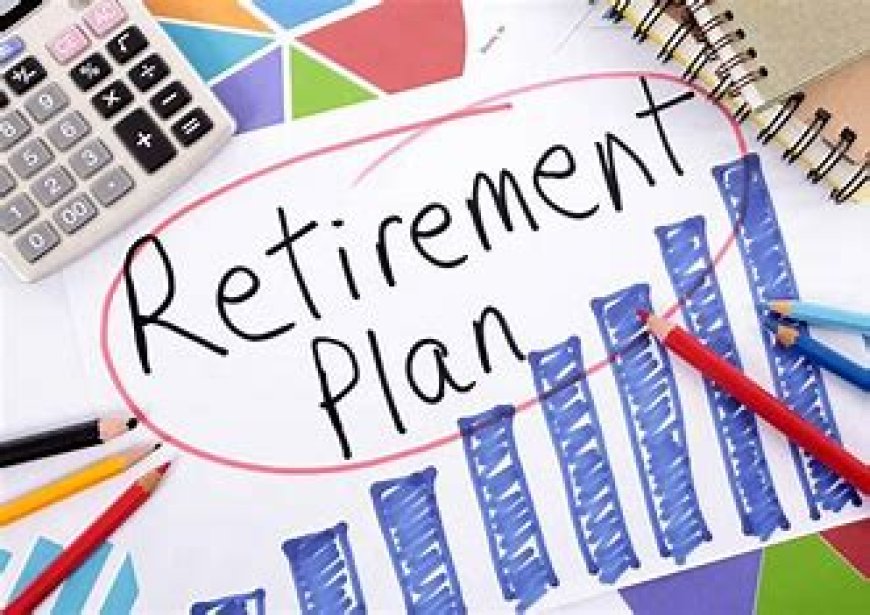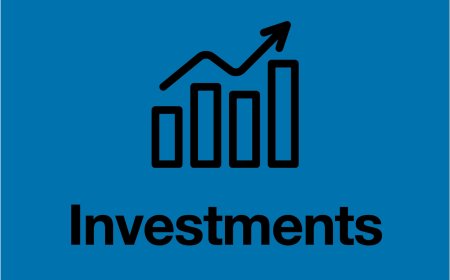Retirement Planning

Setting objectives for your retirement income and then taking the required steps and making the decisions to get there is the process of retirement planning. Identification of income sources, estimation of costs, implementation of a savings strategy, and management of assets and risk are all components of retirement planning.
Retirement planning is making financial and other preparations for living when a paid employment period ends. Lifestyle decisions including how to spend time in retirement, where to live, when to stop working altogether, and others are included in the non-financial elements. A comprehensive approach to retirement planning gives each area equal weight.
Throughout various life phases, differing amounts of focus are placed on retirement planning. When you're young, retirement planning only entails saving away enough money for it. By the middle of the career, the focus may shift to establishing precise income and wealth goals and taking the required actions to achieve them. Years of saving will start to pay off after you retire.
Why Is Retirement Planning important?
Stages of Retirement Planning:
- Young Adulthood: Although those who are transitioning into adulthood may not have much money to invest, they may have the necessary time to allow their assets to grow. It contributes significantly to retirement savings. With reference to the concept of compound interest, such investments can account for a sizable portion of total investments. The longer time you have, the more interest you will earn since compound interest permits interest to be computed on interest.
- Early in middle age: Financial strain from mortgages, school debts, and insurance premiums can be very high at this age. Therefore, saving at this time may be challenging.
- Later in life: This is when you will have one final chance to make up the difference between your real savings and your retirement plans. You'll earn more money, and the majority of your debts will be paid off, so you'll have more money for investing.
Tips and tricks for gaining maximum benefits
If the retirement income target can be met depends on how much money will be available in the future, which is projected. Some retirement plans are location-dependent. In theory, it is a continuous procedure that you may begin at any time. However, the prevailing consensus is that it functions best if you account for it early in your financial planning.
- Financial Fraud
- Credit Card
- Budgeting & Saving
- Banking
- Credit & Debt
- Insurance
- Home Ownership
- Wealth
Importance of Retirement Planning
1. To be ready for emergencies or unforeseen costs
You wouldn't want to depend on anybody in the event of a financial emergency or the need to cover medical costs. With the correct retirement plan, you can build an emergency fund, keeping you prepared for unanticipated emergencies.
2. To reach retirement objectives
Every retirement is a new beginning.
When you have the leisure to pursue objectives like traveling to new places, picking up a new hobby, or even establishing your own business, it is a wonderful period in life. However, you can still be required to fulfill responsibilities, such as sending your child to college abroad. With the correct retirement strategy, you can achieve all of these objectives.
3. Fighting Inflation
You might choose a retirement strategy that can manage a rise in inflation to combat inflation. Verify that the retirement program you select has a "increasing sum assured" option.
This type of protection plan will offer life insurance with yearly increments to mitigate the impact of inflation. In order to build an investment portfolio that provides returns that outperform inflation rates, you may also consult with a financial professional.
4. Secure Your Family's Objectives
You have worked very hard to make life comfortable for your family. But you want to make sure that even without you, this comfort lasts for many years to come.
When you develop retirement plans and collect retirement funds, you might plan to leave money for your family.
5. To Maintain Your Lifestyle
You want to continue living the way you now do even after retirement. Now, these expenses are covered by the money you earn each month. As a result, you can get ready to get a steady paycheck after retirement to cover your living expenditures.
6. To Get Ready for a Longer Life
You may need to save a lot more money in order to be ready for a longer lifespan because the average life expectancy is greater today. Planning, however, will allow you to make all the necessary preparations for a longer post-Retirement income.
Factors to Remember While Planning for Retirement
1. Personality Myopia
It's possible that you now have a variety of fires to put out and that you don't have enough resources. Almost often, current problems appear to be more pressing than upcoming ones.
Start investing for retirement as soon as you can, that is, up until the problem from the future affects the present. Keep in mind that the earlier you start investing, the more you'll have in retirement.
2. Expected lifespan
It is almost guaranteed that you will live longer than your grandparents did. Globally, healthcare and lifestyle advancements are prolonging people's lifespan. The more money you need, the longer you will live.
3. Age of Retirement
You will work longer if you live longer. Your investments for retirement may benefit from this. More individuals are choosing to postpone retirement so they may work longer and earn more.
Their limited resources frequently serve as fuel for this effort. Retirement planning, if done correctly, may enable you to leave your job considerably earlier than others.
4. Growing Medical Costs
You will have to pay more for healthcare as you become older. As you become older, your wallet will continue to be weighed down by medications, examinations, therapies, and maybe even a nurse.
5. Calculate Your Retirement Investments
When preparing for retirement, it is important to strategically evaluate your investments. You may predict your future costs and investments using a variety of tools, such as a loan amortization table, a Medicare tool, and retirement planning calculator.
6. Spending more while earning more
Even while you might be content traveling in economy right now, as time goes on and your income increases, you could decide to upgrade to business class. However, transferring back to economy seats after retirement would hurt, especially at an age when you need the amenities of business class more. If you plan your retirement based on your lifestyle today but your lifestyle improves in a few years.
And even better, if you continue to live below your means now, you'll have more money to invest and, as a result, more money to spend after you retire.
7. The past does not predict the future
You must make a strategy to save as much money as you can for your retirement. If the rate of inflation stays the same after that, you will be ready for it.
If the rate of inflation is lower, you will have a lot more money after retirement than you had anticipated. But if you're very unfortunate and the rate of inflation turns out to be higher than you anticipated, you'll have to make concessions during your winter years. The amount of additional money you would have saved determines how well you can protect yourself from such unpleasant situations.
8. Profit from Investment
If you begin investing early in life, it will take more than three decades for the power of compounding to build your wealth.
At the time of your retirement, even a little difference in the rate of return on your assets can have a significant impact. So be careful to assess your risk tolerance and choose the investment that will increase the value of your money.
The Secret to An Ideal Retirement Plan
1. Create a Budget
This budget accounts for your most recent income and expenses. Even though you should have an estimate of how much you will need to set away each month based on your retirement objectives, you still need to make sure that you have the money to save.
Along with costs for food and shelter, it is a good idea to include retirement savings in your budget so that you may set aside money each month.
2. Set up Automatic Transfers
You may set up this tool between your checking account and retirement account to make sure you don't forget to save.
Set it up so that on the same day each month—possibly the day you get paid—money you are saving for the future gets transferred from your bank account into your investments. If you approach it this manner, you won't take the chance of spending that money.
3. Setting Up A Emergency Fund
If you have a separate emergency fund, generally with three to six months of salary put up, you can cover any unanticipated needs without endangering your retirement goals.
4. Pay Off Your Debt
Everyone should set a goal of retiring debt-free at age 65. That includes credit card debt, especially that incurred on reward cards with high interest rates, as well as any school loans, large auto and home loans, and other loans. Simple: you don't want to owe money when you transition into your post-earning years.
Types of Retirement Planning
1. Actively managed mutual funds
The best solutions for people who don't want to choose their statements are mutual funds. An experienced fund manager can make decisions and act on their behalf instead. Investment opportunities exist across a wide range of stock types, including international stocks, stocks from technological businesses, American stocks, corporate bonds, etc. The main drawbacks of this selection are the costs and flexibility. Since someone else selects the stocks, actively managed mutual funds have higher fees than other types of investment vehicles.
2. Index Funds
Similar to active mutual funds are index funds. These funds adhere to an index that serves as a benchmark, such the S&P 500 or the all-inclusive MSCI World Index. Index funds' results mirror those of the index they follow.
3. Exchange-traded funds
ETFs are similar to conventional mutual funds in that they frequently track an index like index funds and contain a variety of assets like stocks or bonds. The distinction is that they may be bought and sold at any time of day and have a real-time value.
4. Target date funds
One of the most popular 401(k) investments on the market are target date funds, which are all-in-one mutual funds or ETFs that automatically alter their asset class mix as an investor's age advances. To prepare for such scenarios, use a retirement planning calculator.
5. Traditional Individual Retirement Account (Traditional IRA)
The IRA is a fee-based investing mechanism through which people can dedicate their retirement funds. It's a personal account that people create and finance directly, as the name suggests. Depending on the individual's job circumstances, IRAs come in a variety of formats with varying tax requirements.
There is a major difference between traditional and Roth IRAs. Investments in Roth IRAs are made with post-tax funds. As a result, there is no tax break for invested funds upon withdrawal. However, because conventional IRAs enable pretax contributions and lower taxable income for the year, taxes will need to be paid as soon as money is taken from these accounts.
6. Simple IRA
A SIMPLE IRA or Employee Savings Incentive Match Plans are two options available to small businesses. Like a 401(k), it accepts employer and employee contributions, which reduces each party's taxable income by the amount invested by each party.
7. Traditional 401(K) plans
An employee-provided retirement plan supported by the company is known as a 401(k). Like contributions to a conventional IRA, contributions grow tax-deferred. Taxes are due when people take their money, but since their retirement tax band is smaller than it was during their working years, the amount of tax they must pay shouldn't be too large. The contribution cap is larger than it would be for an IRA.
8. Roth 401(K)
This account is sponsored by the employer and is funded using after-tax dollars. Similar to the Roth IRA, neither contributions nor withdrawals are tax deductible, but neither are they taxed either. Similar to a regular 401(k), there are limitations on contributions from both employees and employers. Under 50-year-olds can make a Roth 401(k) contribution of up to $20,500 in 2022.
9. Simplified Employee Pension (SEP) Plans
For people who work for themselves, the SEP plan can be the best option when it comes to retirement planning. This account functions similarly to a regular IRA in that pre-tax contributions reduce your taxable income (or the company's, depending on who contributes), and it is only available to business owners who employ one or more employees or who are self-employed. Until people withdraw it in retirement, money can also grow tax-deferred.
10. Stocks for future growth
Long-term investments produce superior returns. Direct access to this is provided via mutual funds or exchange-traded funds. They do, however, have hazards. The rewards also decrease as markets decline. As a result, a person should select equities based on their level of risk tolerance. The most effective way to lessen exposure to market volatility is to invest in diversified equity funds as opposed to individual equities or investments in niche markets.
11. Bonds
In exchange for an annual payment based on a fixed interest rate, investors lend money to a government or company. After the bond's tenure, investors get their initial investment returned. Depending on the bond type bought, a specific yearly income is guaranteed and there is less risk. In order to balance the overall ups and downs of a portfolio, bonds have a tendency to fluctuate less than stocks.
12. Alternative asset classes
The majority of experts advise holding 5 to 10% of assets in investments other than stocks and bonds. There are many different forms of investments accessible. Gold is a fantastic alternative because of its propensity to rise in value amid economic downturns and the severe market drops. Depending on risk tolerance, one may also purchase other commodities like silver or oil, or they can experiment with futures and options.
Stages
1. Starting as early as possible
The crucial component is time. There are more returns the longer the duration. The time allowed allows compound interest to operate efficiently. Planning for an early retirement is so essential.
2. Make a list of current expenses
Knowing one's predetermined spending exposes the character of one's lifestyle. This in turn aids in determining how much a person will need to save in order to maintain their present standard of living in the future (along with any necessary modifications). This list may also include outstanding loans, entertainment expenses, and trip plans.
3. Giving priority to investing
The secret is in maintaining discipline. Great returns are paved by making little yet consistent investments. Building a balanced portfolio must receive a similar amount of attention. The investment required to achieve the goals may be calculated using a retirement planning calculator.
4. Debts
Retirement funds are obligation-free when you are debt-free. Early debt repayment on high-interest debt prevents interest buildup and creates room for investment.
5. Emergency Fund
It's crucial to have an emergency or contingency reserve. Unexpected costs like hospital or medical fees can burn a hole in someone's wallet. Having a future plan can help you deal with them.
6. Setting up automatic payments
Transfers made automatically from one bank account to another might support discipline. They are also beneficial for investments and debt payments.
7. Check for tax efficiencies
It is crucial to comprehend how returns will be taxed in the nation in which one dwells. As a result, one should prepare properly.
8. Long-term wealth accumulation
People have different aims and goals. They should develop investing strategies in line with their objectives and goals. Long-term investments may include investing in stocks.
9. Not depleting the retirement fund
To attain their short-term goals, people might break their investments into increments. Additionally, having an emergency fund might aid in circumstances that need quick financial action.
10. Monitoring
Investments should be evaluated periodically and adjusted as necessary after taking market performance and aim changes into account. During retirement, investing might be moved to a low-risk strategy.
Provident Fund (PF):
Provident Fund is a mandatory retirement savings scheme in many countries, where both the employer and employee contribute a portion of the employee's salary. The accumulated funds are used to provide a pension or lump sum amount upon retirement. This can serve as a stable base for retirement planning.
Public Provident Fund (PPF):
PPF is a government-backed savings scheme available to residents of India. It offers tax benefits and has a long-term tenure. PPF can be an attractive option due to its fixed returns and security, making it a safe component of a retirement portfolio.
National Pension Scheme (NPS):
NPS is a voluntary, long-term retirement savings scheme in India. It allows individuals to contribute regularly during their working life and receive a pension after retirement. NPS offers exposure to equity and debt markets, allowing for potentially higher returns, but it also carries some investment risk.
Fixed Deposits (FD):
Fixed deposits are a low-risk investment option where you deposit a lump sum amount with a bank for a fixed tenure at a predetermined interest rate. While FDs provide stability and predictable returns, they might not beat inflation in the long run, potentially affecting your purchasing power during retirement.
Other Investments:
Besides the mentioned options, other investments can also be considered for retirement planning, such as:
- Equity Investments: Investing in stocks or equity mutual funds can provide the potential for higher returns over the long term. However, they come with higher risk due to market fluctuations.
- Debt Investments: Bonds and debt funds offer stability and regular income. They can be part of a diversified portfolio to balance risk.
- Real Estate: Owning property can be a valuable asset for retirement. It can provide rental income and potential capital appreciation. However, real estate can also be illiquid and require management.
- Retirement Accounts (e.g., 401(k), IRA): Depending on your country's regulations, retirement accounts like 401(k) and Individual Retirement Accounts (IRAs) provide tax advantages for retirement savings. They often offer a range of investment options.
- Systematic Investment Plans (SIPs): SIPs involve investing a fixed amount regularly in mutual funds. This disciplined approach can help harness the power of compounding over time.
Examples of how retirement planning at early age is better than late
Example 1: The Impact of Compounding in INR
Consider two individuals, Rahul and Priya, both planning for retirement in India. Rahul starts saving for retirement at age 25, while Priya begins at age 35.
Rahul (Starts at Age 25):
Begins investing ₹10,000 per month for retirement.
Assumes an average annual return of 8% on investments.
Total contributions over 40 years: ₹48,00,000
Retirement corpus at age 65: Approximately ₹5.6 crore
Priya (Starts at Age 35):
Needs to contribute more per month to catch up due to the shorter saving period.
Starts investing ₹20,000 per month for retirement.
Assumes the same 8% average annual return.
Total contributions over 30 years: ₹72,00,000
Retirement corpus at age 65: Approximately ₹2.75 crore
Example 2: Flexibility and Peace of Mind in INR
Imagine two friends, Aakash and Neha. Aakash begins retirement planning at age 25, while Neha starts at age 45.
Aakash (Starts at Age 25):
Starts saving ₹5,000 per month for retirement.
Enjoys the flexibility to adjust his contributions over time.
Experiences market ups and downs but can weather the fluctuations over decades.
Can pursue various life goals without sacrificing his retirement savings.
Neha (Starts at Age 45):
Needs to contribute a larger portion of income to reach retirement goals in a shorter timeframe.
Has limited flexibility to adjust contributions due to the shorter saving period.
Might need to take on higher investment risk to catch up on growth potential.
Might face challenges balancing current financial needs with retirement savings.
Example 3: The Advantage of Time and Risk
Consider two friends, Ravi and Meera, both planning for retirement in India. Ravi starts his retirement planning at age 30, while Meera begins at age 50.
Ravi (Starts at Age 30):
Begins investing ₹15,000 per month for retirement.
Assumes an average annual return of 10% on investments.
Total contributions over 35 years: ₹63,00,000
Retirement corpus at age 65: Approximately ₹4.7 crore
Meera (Starts at Age 50):
Needs to contribute significantly more per month to catch up due to the shorter saving period.
Starts investing ₹40,000 per month for retirement.
Assumes the same 10% average annual return.
Total contributions over 15 years: ₹72,00,000
Retirement corpus at age 65: Approximately ₹1.4 crore
How compounding is useful in retirement planning?
Compounding is a powerful concept that plays a crucial role in retirement planning. It refers to the process where the returns generated from an investment, whether interest, dividends, or capital gains, are reinvested to generate additional earnings. Over time, these additional earnings also generate returns, creating a snowball effect that can significantly boost the growth of your investments. Compounding is especially beneficial for long-term financial goals like retirement planning. Here's how it works and why it's so useful:
1. Exponential Growth:
Compounding leads to exponential growth over time. As your investment gains accumulate, they start generating their own gains. This continuous reinvestment of earnings causes your money to grow faster and faster, accelerating the growth curve.
2. Leveraging Time:
The longer your money is invested, the more time it has to compound. This is why starting to invest for retirement early is crucial. Even small contributions made early can grow into substantial amounts due to the extended time for compounding.
3. Reduced Reliance on Contributions:
With compounding, your investments have the potential to generate a significant portion of your retirement corpus. This means you might not need to contribute as much over time to reach your desired goal, reducing the burden on your current income.
4. Mitigating Market Fluctuations:
Over a long investment horizon, the impact of short-term market fluctuations tends to smooth out. This means that even if there are periods of market volatility, the overall growth trend can remain positive due to compounding.
5. Overcoming Inflation:
Compounding helps your investments stay ahead of inflation. Inflation erodes the purchasing power of your money over time. By earning returns that exceed the inflation rate, you ensure that your retirement savings maintain their value.
6. Flexibility and Peace of Mind:
The power of compounding provides you with a cushion of growth. This financial cushion can offer flexibility, allowing you to adjust your investment strategy over time without compromising your retirement goals.
7. Starting Small:
Compounding allows you to start with smaller contributions and build up gradually. Even modest amounts, consistently invested over time, can lead to substantial growth due to compounding.
8. Long-Term Perspective:
Compounding encourages a long-term investment perspective. It discourages frequent trading and speculation, promoting a more stable and disciplined approach to investing, which is essential for retirement planning.
Effective retirement planning involves starting early to benefit from compounding, creating a diversified portfolio, managing risk, setting clear goals, regularly reviewing and adjusting your plan, seeking professional advice, and maintaining an emergency fund for unexpected expenses. By following these principles, you can work towards a secure and enjoyable retirement.
What's Your Reaction?
 Like
1
Like
1
 Dislike
0
Dislike
0
 Love
0
Love
0
 Funny
0
Funny
0
 Angry
0
Angry
0
 Sad
0
Sad
0
 Wow
0
Wow
0







































































